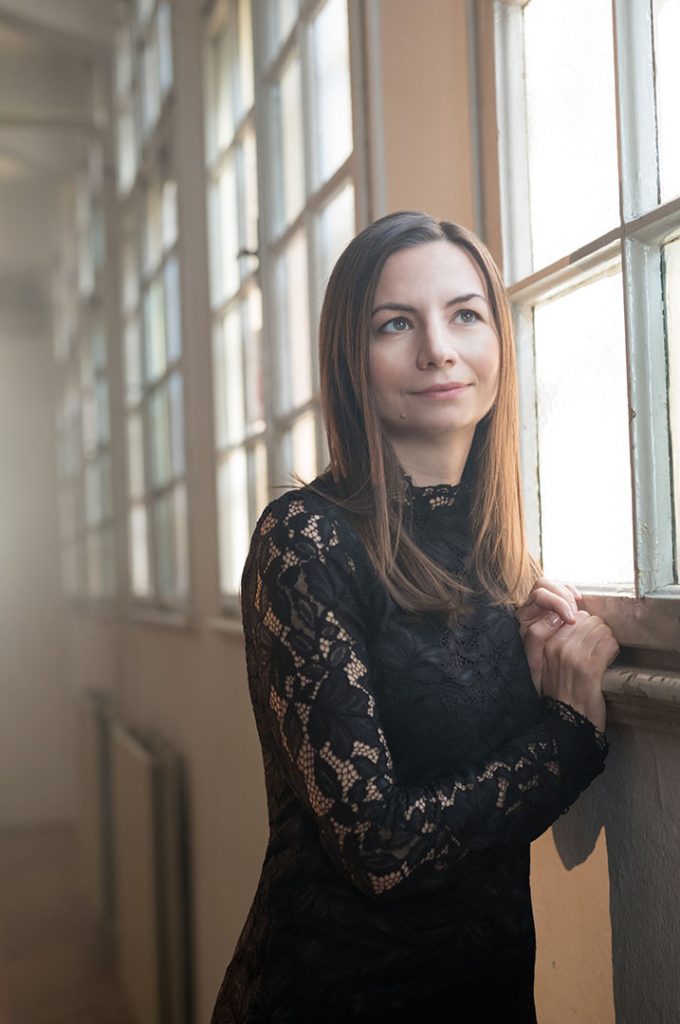New World Symphony wraps a pandemic season with Mozart, Wagner and a U.S. premiere

The New World Symphony ended its season Saturday with another online-only concert, with plans for a return to live concerts in the fall.
Social-distancing restrictions were reflected in the concert’s focus on works for small groups and a Classical-sized orchestra. But next season, the ensemble will balloon back to symphonic proportions, with the October 9 season opener featuring Mahler’s Songs of a Wayfarer and Schumann’s Symphony No. 1.
The concert–the stream of which started 15 minutes late–used the services of three conductors and opened with Mozart’s Serenade No. 12 in C minor for winds. Classical serenades are typically light, garden-party music. But the party that Mozart envisioned sounded like a pretty stern affair, judging from the work’s minor-key melodies, strict counterpoint and formal tone.
Under conductor Matthias Pintscher, the New World musicians gave a performance that was tonally rich, finely balanced and full of vigor and personality. In the opening Allegro, after the dark opening melody, the musicians brought the gentler second theme to a swelling climax. A highlight throughout was the playing of oboist Victoria Chung, whose performance was marked by expressive phrasing and gleaming tone.
The counterpoint of the Menuetto came off with clarity and compact power. There was a restraint to the playing in the final Allegro, giving the somber melodies an understated force and showing how much dramatic space there is in the dynamic range between piano and mezzo-forte. Particularly effective were the bassoons, whose busy accompaniment gave the work much of its texture.
The concert included the U.S. premiere of a 2020 work by the young Slovenian composer Nina Šenk, a former student of Matthias Pintscher. Titled da kehrte die Ruhe ein (and then came peace), the work was performed by Scott Leger on horn, Morgen Low on trumpet and Arno Tri Pramudia on trombone.
Using mutes, the instruments created a wa-wa sound as a solemn pedal point under notes by the other instruments. In contrast to the fluent melodies of the Mozart serenade, with its thousands of notes, this slow and atmospheric work treated the arrival of every new note as an event. Each tone or pair of tones moved the work along, with the listener invited to savor each new development of the music as it traversed its austere course.
Next came the Symphony No. 1 in G major, Op. 11 by the 18th-century composer Joseph Boulogne. The son of a Caribbean sugar planter and one of his slaves, Boulogne is considered classical music’s first significant black composer. Boulogne was referred to with what many saw as the demeaning nickname “the Black Mozart.”
Boulogne’s style does have the buoyancy of a Mozart or Haydn symphony with piquant rhythms and transparent orchestration. That sort of scoring transparency can be merciless in exposing weak playing, but the New World musicians under conductor Chad Goodman gave a taut, in-tune and vigorous performance.
After the crisp Classical works and otherworldly contemporary music, Wagner’s Siegfried Idyll was an effective contrast, with its stream of warm romantic melody. Composed as a birthday present for his wife Cosima, the work finds Wagner in an uncharacteristically gentle mood.
From the beginning, when the simple opening melody blossoms into full Wagnerian sensuality, Pintscher led a performance that left none of the work’s passion understated. But while the musicians brought out the work’s warmth and turbulence, the piece never lost its intimate tone, and Pintscher kept the dynamics to proportions that would not have sounded out of place at its original premiere on the staircase outside Cosima’s room.
Robert Spano, music director of the Atlanta Symphony Orchestra, led an eight-member ensemble of wind, brass and a double-bass in Edgard Varèse’s Octandre, a 1923 work composed before the electronic music for which the composer would become best known.
Eerie solo melodies, shrieking dissonances and dense chords marked the work. Spano led a well-paced performance of this complicated music, emphasizing the dramatic clashes and contrasts between solo lines, moments of silence and crashing chords.
The New World Symphony’s 2021-22 season opens October 9 with Michael Tilson Thomas leading a program featuring Gordon Getty’s Overture to Plump Jack, Schumann’s Symphony No. 1 and Mahler’s Songs of a Wayfarer with baritone soloist Dashon Burton. nws.edu
Posted in Uncategorized
Leave a Comment
Sun Jun 6, 2021
at 12:35 pm
No Comments






